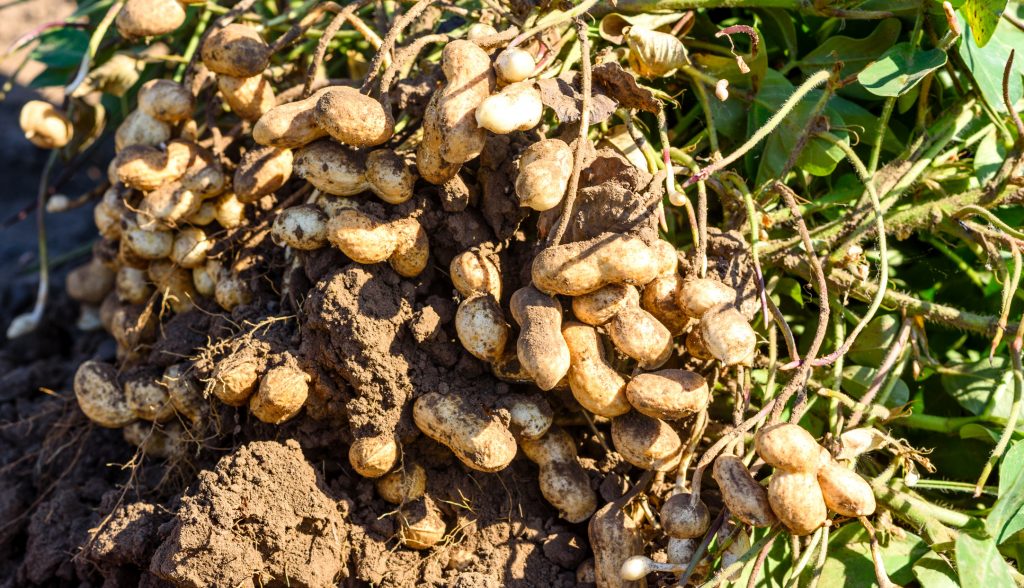Although the peanut market enjoys good quality crops from both Argentina and Brazil, and despite positive news about the upcoming crop in the US, the peanut market seems very unstable. Uncertainty about shipments and freight rates, an expected decrease in plantings in Argentina, uncooperative weather in China… But luckily, there is also positive news to report. Read all about this in the newest peanut market report by Herman Driesens, manager at Rotterdam Commodity Trading.
Argentina & Brazil
News from Argentina about shipments that are fully or partially canceled and/or rolled to the next vessel(s), and with freight charges continue to increase (in some cases with more than 250%) is putting a lot of pressure on shippers and making European buyers insecure and nervous.
The spot market has become very active, and Argentina basically has to ship 40,000 to 50,000 mtons monthly to satisfy the demand in the EU, and right now, we are lucky if 60 to 70% leaves in time. Even if goods are shipped in the month contracted for, we see that some shipments take more than eight weeks to arrive at their destination.
From shellers, we hear that October shipments are either canceled or not confirmed yet.
Some shipping lines are offering much higher ocean rates for October shipments after canceling existing bookings first. What this means for shipments after October is unknown, but it seems this will not be back to normal soon, if at all.
New offers from Argentina (and in some cases from Brazil) all include a freight clause which basically means that if the freight goes up, the contract price also increases. The same happens if freight rates go down but this seems unlikely to happen in the months to come.
The same, although to a lesser extent, we see happening in Brazil. But of course, the EU mainly depends on shipments from Argentina, where 70 to 80% of the peanuts consumed in the EU have to come from.
In regards to new crop plantings in Argentina, the situation seems not very optimistic. Although it is still early, it is expected that plantings will decrease by 5 up to 20%!! 20% is hard to imagine knowing that shellers plant peanuts to use the shelling capacity to the maximum if possible. Let’s see what the first estimate will tell us. The main reasons for this expected decrease in plantings are:
- High rent prices for the land. (Even up to USD 1350 per hectare, with last season USD 900/950 being the most expensive).
- Slowdown of the exchange rate against inflation which causes a reduction in margins because costs in pesos are increasing, and it costs more and more in dollars.
- Competition from alternative crops that maintain good prices (soybean, corn).
- This year, it was more complicated than in previous years to obtain land with good aptitudes for peanut planting.
On top of this, we understand that a dry season (La Niña) is expected for the next six months affecting the whole peanut area. (We wrote about ENSO events last year. Click here to find these articles).
Plantings in Brazil are expected to be the same or slightly up (5%) due to firm domestic prices and drought and frost damages in sugar cane, which will make more areas suitable for crop rotation. So far, it has been too dry, but recent rainfall brought some relief, but more rain is definitely needed.
United States
From the USA, so far only positive news to report. Although the September crop estimate was lower than the one from August, the good weather of the past few weeks should contribute to good quality and higher yields than expected.
We have seen a very tight market this past season, especially on Inshells, Virginia’s XL, and Spanish. It is expected that the demand for these grades will continue to keep the market tight and at a higher price level.
As far as runners are concerned, we feel that raw USA runners will be competitive with Argentine or Brazilian origin but not so much on blanched peanuts. So far, ocean rates from the SE have not changed (as much) as we are now experiencing in Argentina and Brazil, not to speak of Asia, of course.
China
Earlier reports about the crop in China were quite positive, but lately, it seems the sentiment has changed. See below from one of Herman’s oldest friends in the industry (though young at heart😊 ):
“The 2021 peanut crops had been progressing well (with more than usual pods formed) by early August in all the major origins in China, including Henan, Shandong, Hebei, and particularly northeastern provinces. But the weather seems to have been uncooperative when entering the harvest period. At first, the central regions such as Jiangxi and Hubei (which are not major origins), then Henan, the largest peanut origin in China, producing nearly 30% of China’s total peanut output. The big issue/concern, so far, for the earlier-planted spring crops in Henan is more on the quality side.
The farmers have been saving no effort to minimize yield loss but cannot do much about the quality since the drying of peanuts in China still relies on sunshine.
But for the summer Hsuji crop (mostly in southern Henan), planted during June, to be harvested mainly during October, lower than average – rather poor yield is estimated.
Shandong may manage to harvest a quite good crop despite negative impacts from wet weather during the harvest period, thanks to rather small-scale farming and hilly fields of sandy soil that dry off quickly.
But in northeastern China, where each farmer plants peanut crops on a relatively large scale, peanut harvest may last longer. While the optimum harvest window is narrow, there is a relatively high risk of quality damage (frozen damage in particular) and yield loss during the harvest period.
Because of weather issues in Henan and uncertainty in northeastern origins, Graded Hsujis of old crops (ex. cold storage) have gained on average RMBY600/MT during recent weeks.
However, peanut oil and oil stocks remain very depressed. First of all, because of the large carryover. Secondly, the weather issue during harvest proves a bullish factor for the edible market, but not really for the crushing market since a lot of edible Hsujis may be downgraded to oil stocks, I’m afraid.“




 Westplein 58
Westplein 58



 We use cookies to ensure you get the best experience on our website. For more information, please read our
We use cookies to ensure you get the best experience on our website. For more information, please read our